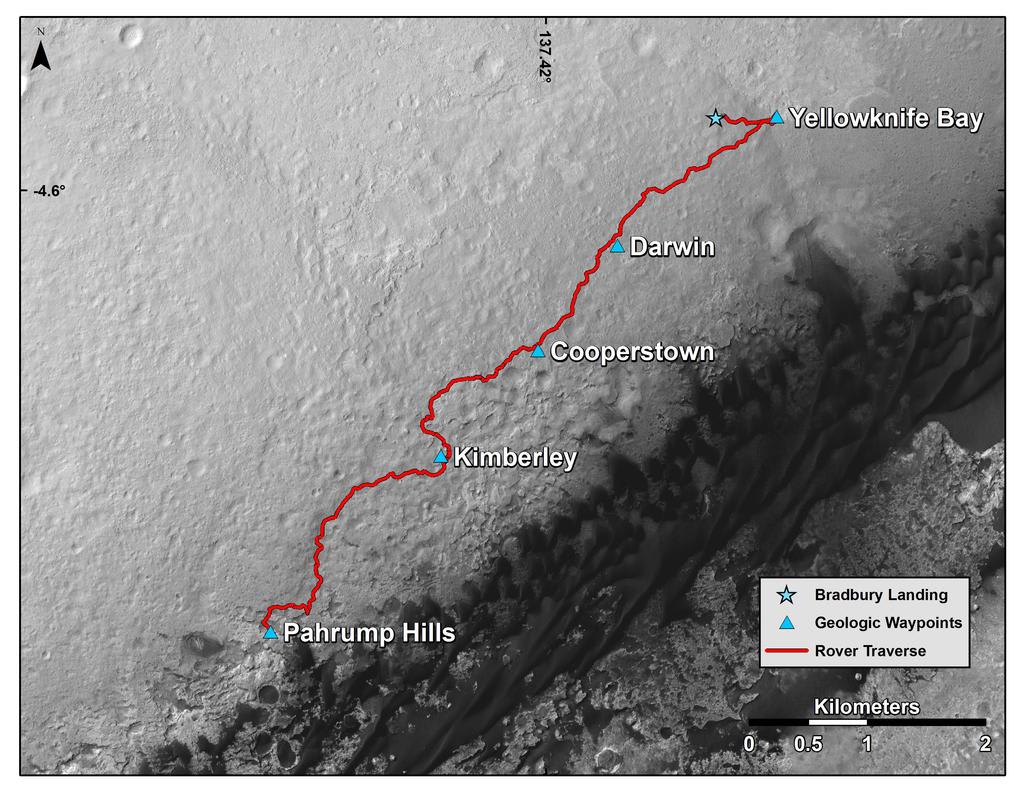
Commander Report
Gregory Leonard
12/07/14
----概略です----
土曜日の夜は、カードゲームを全員でやって夜更かししたということで、日曜の朝は、2~3時間ほど遅く起きました。
*睡眠は、大切です。
今日は、ToniさんのEVAです。MurakamiさんとSusanさんと3人で行いました。
Toniさんの研究は、古代の火星環境の類似環境として地質、地形および岩石学的特徴(生物学的活性とバイオマーカーとなる)の相関に焦点を当てています。
今日は、このミッションで最高に良く晴れた日だったとのことです。
なので、熱中症にならないように気をつけてEVA活動したそうです。
*熱中するのは、大切なことですが・・・
・暖かい日は、決まってヘルメット内部の曇りが発生します。
・時折、サングラスがヘルメットにかすかに当ったり、帽子が頭からずれて視界に影響を与えたりしました。
ハブを出る前にしっかり装置を固定する必要があるのと比較的ゆるいヘルメットが問題です。(ヘルメットが個々のメンバーのサイズに合っていないのとデザインや状態に関連しています。)
VictorさんとMurakamiさんは、ハブのロフトにある水タンクについて改良を試みたそうです。
水を補充する際に投入ポンプの止め忘れによって水があふれる事故が度々起こっているそうです。
2人は、Rube Goldberg’ type system というものを構成しました。予備試験は、限定的な成功を収めたようですが、更なる改善が行われるでしょう。
世界中の子ども達から寄せられた火星探査機関連の質問に全員で答えました。
これは、 outreach Q & A video sessionとして完了しました。
*どんな内容なんでしょうか?気になりますね。

村上さんの応援をよろしくお願いいたします。
応援サイトは、以下の通りです。
・日本火星協会 MDRSページ
・火星のいきものをさがそう!(facebook)
・MDRS天気予報(facebook)
----原文です----
For many people on Earth, weekend days like today Sunday are days off, a day for rest. For us here at MDRS, and on a rather short two week mission, we choose sometimes to take advantage of our precious time and continue our Mars surface analog work. We are human however, and in addition to having meaningful work, we too require ample rest, play and sleep. So after last night’s card games shared amongst the crew, all crew slept in for an extra couple of hours this morning before prepping for a scheduled EVA.
Geologist Toni de Morais Teles Biologist presented his EVA plan and field objectives and directed his EVA team members Biologist Yusuke Murakami and HSO Susan Jewell with their specific EVA tasks. Engineer Victor Luo managed HabCOM. Toni’s research is focused on correlating geologic, geomorphic, and petrologic characteristics with possible biologic activity and biomarkers as an analog for ancient Mars environments. He evaluated several near-Hab geologic units, collecting rock drill samples and site characteristics. The EVA team was out of airlock at 1002, and first completed the engineering EVA duties. Being our first clear sunny day on this mission to date, the EVA proceeded with caution so as not to overheat. Yusuke assisted with Toni’s field survey and sampling, and both he and Susan photo- and video-documented the EVA, and captured updated images of the Hab, GreenHab, and Musk Observatory. Post-EVA briefing revealed similar challenges experienced by virtually all EVAs on warm MDRS days: some fogging of helmets due to condensation from astronaut exhalations and light sweating. Occasionally, sunglasses were bumped slightly, or hats slipped downward off the head to partly obscure visibility. This is partly a matter of optimally securing the headware before EVA departure from the Hab, and partly a matter of the relatively loose helmets repeatedly bumping against glasses and hats (this related to proper fit of helmets to individual crew members, and overall helmet design and condition).
Engineer Victor Luo and Biologist Yusuke Murakami attempted improvements on the internal water tank located the Hab loft that seems to have been plaguing MDRS crews with occasional and completely unwanted in-Hab water spills. The problem arises when the filling system remains unattended and the tank overflows. Why is the filling tank left unattended? This usually occurs since the tank fills very slowly and the person monitoring the tank-filling process sometimes decides they can complete another task for a few minutes and return in time to switch off the filling pump. Occasionally the tank monitor has apparently forgotten the prime directive of observing the process and the tank overflows. So Victor and Yusuke have devised a ‘Rube Goldberg’ type system comprised of a (sterilized) inner tank float, strings, pulleys, and a mouse trap system; it is a glorified ‘kill switch’ it has been installed and is in trial phase. Pretesting shows limited success; further improvements will be trialed.
I worked on final measurements and designing the second wall for the 7th stateroom. Victor completed further 3D infrared stereo scans of the Hab, this time with crew performing in-Hab daily and research-related activities on decks 1 and 2.
All crew completed further requisite in-simulation testing measures.
In addition all crew completed an outreach Q & A video session, answering Mars exploration related questions submitted by school children from all over world. Our crew introductions and recital of questions and answers will be posted for viewers on social media, and made available as special internet video links to the schools that submitted the questions. Answering questions submitted by children from around the globe really reminds us, the crew of MDRS-144, of the technical challenges of Mars exploration and colonization, the harsh Martian conditions, and the day-to-day pragmatic issues of traveling through space or living on Mars. More so, we are reminded of why we are here, because each of us, all of us were once inspired in the past, by persons at least a little bit just like ourselves.





















